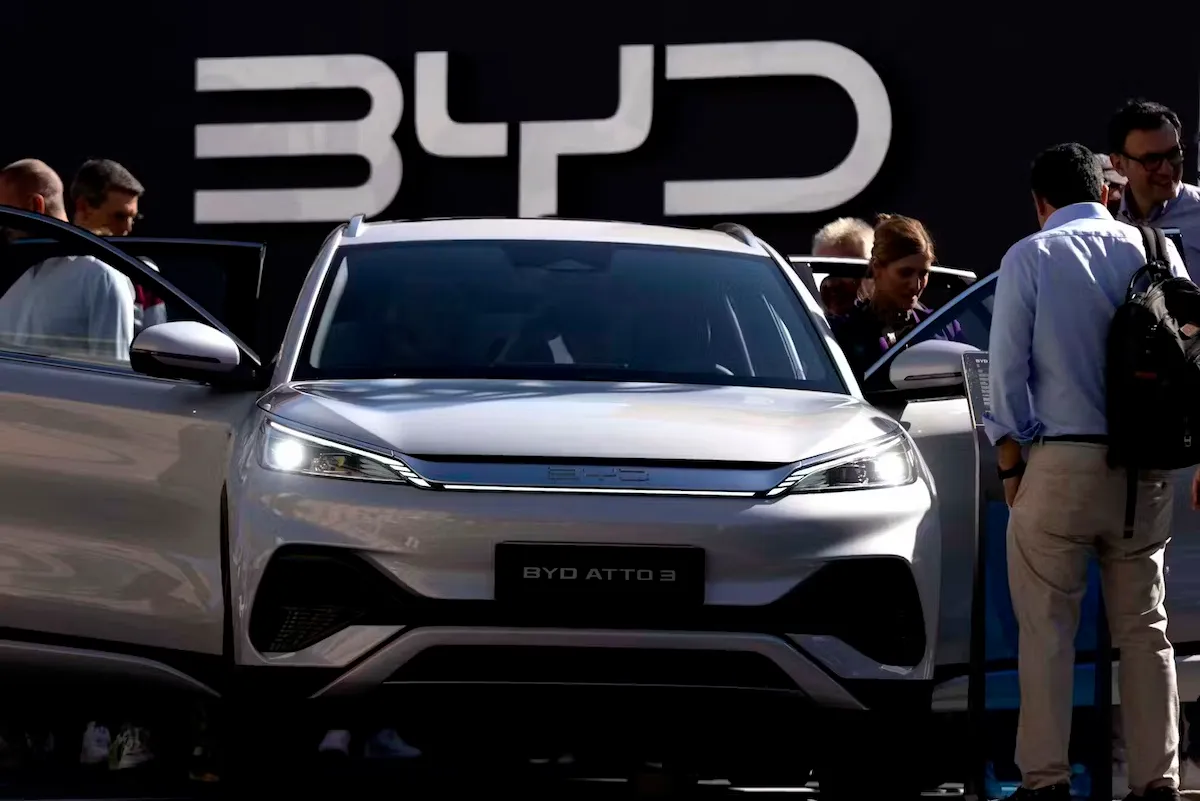BYD’s Winning Streak Ends: July EV Deliveries Slide Amid Intensifying Price War in China
BYD’s Winning Streak Ends: July EV Deliveries Slide Amid Intensifying Price War in China
By
Calder Monroe
Last updated:
August 4, 2025
First Published:
August 6, 2025

Photo: Asia Times
China’s EV Growth Hits a Speed Bump
After months of sustained expansion, China’s electric vehicle (EV) sector experienced a rare slowdown in July 2025. BYD—China’s largest EV manufacturer—led the decline with a noticeable drop in monthly deliveries, joined by other heavyweights like Li Auto and Nio. The slump comes as the country’s ongoing EV price war reshapes consumer expectations and forces automakers into deep discounts, drawing concern from Beijing.
At the same time, rising contenders like Xpeng, Xiaomi, Leapmotor, and Aito managed to buck the trend with record-breaking or month-over-month growth.
BYD’s July Drop: First Decline in 2025
BYD delivered 341,030 vehicles in July, a 9.7% decline from June’s 377,628 units, and virtually flat compared to July 2024. This marks the company’s first delivery dip of the year after six straight months of gains that began with 296,446 units in January.
The downturn followed aggressive pricing moves in May, when BYD slashed prices by up to 30% on several entry-level battery electric and plug-in hybrid models. This sparked a chain reaction across the industry, pressuring rivals to follow suit. However, such tactics have raised alarms among Chinese regulators, who have urged automakers to prioritize sustainable competition over a race to the bottom.
Li Auto and Nio: Consecutive Declines
Li Auto, known for its extended-range hybrid SUVs, posted 30,731 deliveries in July—a significant 15.3% drop from June’s 36,279, and down nearly 40% year-over-year. This marked its second consecutive monthly decline and one of the sharpest downturns among major EV brands.
Nio fared similarly, reporting 21,017 deliveries, down 15.7% from June’s 24,925—which had been its strongest month in 2025. Compared to July 2024, the drop was 2.7%, with all three major models seeing reduced demand.
To counteract the slump, both brands unveiled new models on July 31.
- Li Auto launched the Li i8, its first fully electric SUV, priced between 321,800 and 369,800 yuan ($44,700–$51,400). Deliveries are set to begin August 20.
- Nio debuted the L90, a new six-seater SUV starting at 265,800 yuan, or 179,800 yuan with the brand’s battery subscription. The seven-seater version is expected in late September.
Bright Spots: Xpeng, Xiaomi, Leapmotor, and Aito
Amid the broader slowdown, several challengers surged ahead:
- Xpeng reported a record 36,717 units delivered in July, up slightly from June. This marked its ninth consecutive month with deliveries exceeding 30,000. The company also announced the upcoming launch of its second-generation P7 sedan, scheduled for August 6.
- Xiaomi, which only entered the EV race recently, delivered over 30,000 units, a jump from 25,000 in June. The growth followed the July release of its YU7 electric SUV, drawing interest among tech-savvy buyers.
- Leapmotor, backed by Stellantis, hit an all-time high with 50,129 deliveries, the highest monthly total in the company’s history. The brand continues to gain ground in the value-EV segment, particularly in lower-tier Chinese cities.
- Aito, part of the Harmony Intelligent Mobility Alliance led by Huawei, delivered 40,753 vehicles through its Wenjie series, contributing to a group-wide total of 47,752 units in July. Huawei’s in-vehicle HarmonyOS and growing retail network have fueled strong momentum.
Zeekr Holds Steady, Others Lag Behind
Not all brands saw growth or steep declines. Zeekr, a premium EV brand under Geely, reported 16,977 deliveries, nearly identical to its June figure. While stability may suggest loyal demand, the lack of growth highlights the challenges in the high-end segment, where price cuts are less impactful.
Beijing Steps In: Too Much Competition?
The EV price war—once hailed as a win for consumers—has now caught the attention of China’s top economic officials. In recent months, state authorities have warned automakers against “irrational pricing strategies” that could lead to industry instability. Despite this, discounting continues to dominate sales strategies as companies aim to hit volume targets before Q3.
Outlook: Winners and Losers in China’s EV Shakeup
China remains the world’s largest EV market, with over 9 million EVs expected to be sold this year alone. However, the July numbers reveal that the battlefield is shifting. Legacy giants like BYD may face tougher months ahead as leaner, more aggressive rivals find ways to grow in a margin-squeezed environment.
Brands that can innovate quickly, control costs, and differentiate through tech—like Huawei-backed Aito or AI-driven Xpeng—may emerge as the next leaders in the evolving EV hierarchy.
For now, July 2025 serves as a wake-up call: growth is no longer guaranteed in China’s EV sector. Only those who adapt fast will survive the storm.
Popular articles
Subscribe to unlock premium content
Disney’s Timeless Magic and How the Entertainment Giant Continues to Shape Culture and Innovation

Imran Khan’s Economic Missteps Amid Political Chaos in Pakistan

The Philippines’ Digital Shift How Remittances and BPO Are Fueling Growth

Disney’s Timeless Magic and How the Entertainment Giant Continues to Shape Culture and Innovation

Imran Khan’s Economic Missteps Amid Political Chaos in Pakistan

Disney’s Timeless Magic and How the Entertainment Giant Continues to Shape Culture and Innovation









